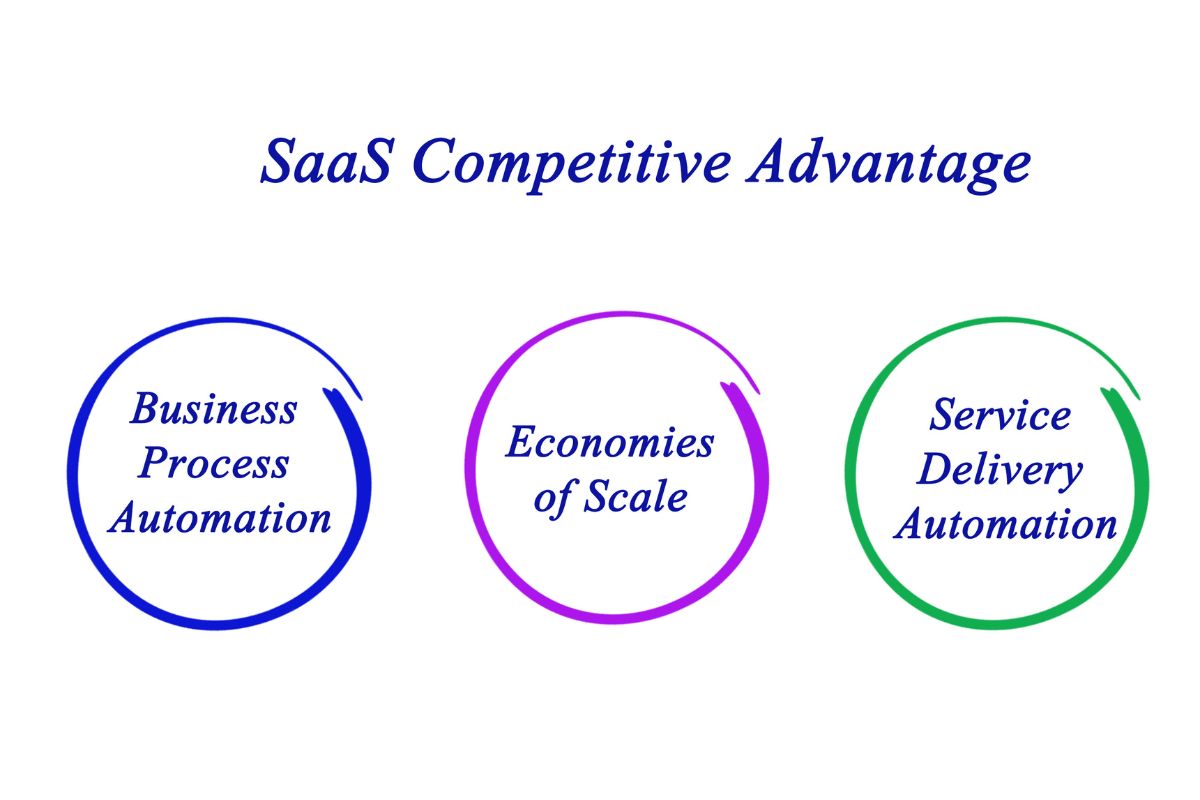Utilizing the power of the cloud and cloud-based infrastructure, a cloud-based solution meets corporate goals, frequently with increased operational efficiency and cost-effectiveness.
These solutions store, manage, and process data not on distant servers that are kept up to date by outside suppliers.
One of the popular models of cloud-based solutions is Software as a Service (SaaS). If you’ve ever used Job Management Software or a customer relationship management application, then chances are, you already know how SaaS works.
This article will let you explore more of the benefits of SaaS and how it is pushing business growth.
Table of Contents
ToggleUnderstanding The SaaS Model
Under the SaaS model, a company makes money by providing its customers with cloud-based software.
SaaS programs can be accessed remotely from any location or device via an internet network, offering potential advantages over traditional software business models.
A component of the Software as a Service (SaaS) model enables users to rent software on a subscription basis, paying for the product over time in installments rather than buying it whole.

Advantages of SaaS
- Cost-Efficiency: By using SaaS, companies can avoid the high upfront expenses related to buying infrastructure and software licenses. Rather, they pay a membership price, usually once a year or twice a year, which often ends up being more economical in the long term.
- Scalability: SaaS solutions provide unmatched scalability, making it simple for companies to modify their usage in response to evolving requirements. SaaS platforms are capable of smoothly accommodating development without causing any disturbance, be it through the inclusion of new features, the access of more users, or the expansion into other areas.
- Flexibility and Accessibility: Users can access apps on any device and from any location with an internet connection because they are housed in the cloud. This adaptability encourages cooperation amongst dispersed teams in addition to increasing productivity.
- Automated Updates and Maintenance: SaaS providers take care of all software maintenance, including security patches, updates, and upgrades. By doing this, companies are freed from having to manage complicated IT infrastructure and can concentrate on their core competencies.
How Does SaaS Help Drive Business Growth
Beyond just improving operational effectiveness, SaaS benefits directly affect the expansion of businesses. Here’s how SaaS is enabling companies to grow and prosper:
1. Pushing Innovation
SaaS platforms give companies access to cutting-edge features and technology without requiring a large investment in development resources.
This enables businesses to innovate quickly and launch new goods and services more quickly.
Businesses may stay ahead of the curve and react quickly to shifting consumer needs and market dynamics by utilizing SaaS solutions.
2. Improving The Client Experience
The client experience is critical in the digital age. SaaS gives companies the ability to provide smooth, customized client experiences by utilizing real-time communication channels, AI-driven insights, and sophisticated analytics.
Businesses may customize their services and establish meaningful connections that foster advocacy and loyalty by getting a deeper understanding of the requirements and preferences of their customers.
3. Encouraging Remote Work and Collaboration
SaaS allows teams to work together productively no matter where they are in the world thanks to platforms like document sharing, communication, and project management software.
This encourages collaboration and creativity, which boosts output and efficiency throughout the company.
4. Reducing Cost
The expense of IT infrastructure and maintenance is continuously increasing. SaaS solutions can drastically reduce these expenses, allowing you to have a flexible and safe business system while investing your cash in other areas.

Typically subscription-based, SaaS models offer both scalability and customized solutions based on your unique requirements.
SaaS is becoming increasingly common among business units due to its very low initial investment and lower hardware costs. You have complete control over all business functions and can add or remove people as needed.
5. Ensuring Security and Reliability
SaaS providers must abide by stringent guidelines and rules to guarantee the confidentiality and security of the data of their clients, allowing for increased security and reliability.
In addition, they must spend money on reliable backup plans and infrastructure to guarantee the functionality and accessibility of their product.
6. Increasing Market Coverage
SaaS is a scalable and affordable option for companies wishing to grow into new markets or geographical areas.
Without having to make significant infrastructure investments, companies may swiftly expand their offers into new markets by utilizing cloud-based solutions.
Because of their adaptability, businesses can take advantage of new opportunities and meet consumer demand, which accelerates their growth and market penetration.
7. Ensuring Seamless Integration
Before SaaS became widely recognized, businesses were concerned that SaaS and legacy systems would not work together at all and cause problems for users.
However, all of these worries were allayed when it was discovered that SaaS apps can interact with current software without any problems and are generally consistent.
SaaS solutions come with integrated APIs and interface points, which facilitate the seamless connection of one software product with another ones.
Consequently, companies may find it advantageous to use SaaS due to its application integration, which permits the use of several software programs.
8. Putting Main Business Functions First
Businesses can avoid being sidetracked by technical problems and concentrate on their core competencies and strategic goals by outsourcing IT infrastructure and software maintenance to SaaS providers.
SaaS providers make sure that the software functions properly by handling security, performance, and upgrades.
As a result, businesses can focus more of their time and resources on what they do best, which boosts growth and strengthens their competitive advantage.
9. Enabling Data-driven Decision Making
Integrated analytics and reporting capabilities are a common feature of SaaS applications, providing organizations with insightful data about their operations, clientele, and industry trends.
Using data to inform decision-making enables businesses to spot growth prospects, enhance their product offerings, and modify their plans in response to changing client demands.
Utilize SaaS In Your Business
The resurgence of SaaS signifies a fundamental change in how companies see innovation and technology.
Businesses can seize new chances for development, efficiency, and competitiveness by adopting cloud-based technologies.
SaaS is delivering measurable outcomes and changing the face of a company, whether it’s by fostering innovation, improving customer experience, or enabling remote work.
Businesses that leverage SaaS will be in the greatest position to prosper in an increasingly dynamic and connected environment as we navigate the digital terrain.










